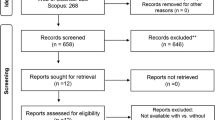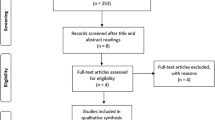Abstract
Purposes
The purpose of this study is to investigate the effect of wearing dentures on obstructive sleep apnea and hypopnea among completely edentulous patients.
Methods and materials
A self-controlled study was conducted among 30 edentulous patients. Polysomnograms were recorded in the sleep laboratory on two consecutive nights. Participants slept with their dentures in one night and without dentures in the other. The apnea and hypopnea index (AHI), lowest oxygen saturation (L-SpO2), and morning blood pressure (MBP) were collected for statistical analysis.
Results
Among the edentulous participants, 24 showed a higher AHI when sleeping with dentures. The average AHI for all 30 participants was significantly higher when they slept with dentures than without dentures (16.3 ± 14.7 vs 13.4 ± 14.0/h, P < 0.05). Participants in the non-obstructive sleep apnea-hypopnea syndrome (non-OSAHS) subgroup (AHI <5 when sleeping without dentures) had a significant increase in AHI when sleeping with dentures, and nearly half of them (5 out of 11) reached the diagnostic standard for OSAHS (AHI >5). A higher morning diastolic blood pressure was recorded when participants slept with dentures (P < 0.05), while no significant difference was found in the L-SpO2 score and morning systolic blood pressure.
Conclusions
Wearing dentures can lead to significant increase of AHI and diastolic MBP among edentulous people. Hence, we suggest that Chinese edentulous people should remove their dentures before sleep.
Trial registration
ChiCTR-IOR-16008404




Similar content being viewed by others
References
Malhotra A, White DP (2002) Obstructive sleep apnoea. Lancet 360(9328):237–245
Ivanhoe JR, Cibirka RM, Lefebvre CA et al (1999) Dental considerations in upper airway sleep disorders: a review of the literature. J Prosthet Dent 82(6):685–698
Bucca C, Cicolin A, Brussino L et al (2006) Tooth loss and obstructive sleep apnoea. Respir Res 7:8
Carossa S, Pera P, De Lillo A et al (2000) The influence of edentulism on spirometric values. Minerva Stomatol 49(9):405–408
Bucca C, Carossa S, Pivetti S et al (1999) Edentulism and worsening of obstructive sleep apnoea. Lancet 353(9147):121–122
Almeida FR, Furuyama RJ, Chaccur DC et al (2012) Complete denture wear during sleep in elderly sleep apnea patients—a preliminary study. Sleep Breath 16(3):855–863
Chaccur DC, Bittencourt LRA, Lucchesi L et al (2012) Assessment of the impact of vertical dimension alterations on the quality of sleep in elderly patients wearing upper and lower full dentures. Sleep Sci 1(5):1–6
Pivetti S, Navone F, Urbino R et al (1999) Edentulism worsens obstructive sleep apnea. Emerg Med 34:4
Arisaka H, Sakuraba S, Tamaki K et al (2009) Effects of wearing complete dentures during sleep on the apnea-hypopnea index. Int J Prosthodont 22(2):173–177
Zou D, Dong XS, Han F et al (2014) Effects of wearing dentures on sleep breathing among edentulous people: a preliminary study. Beijing Da Xue Xue Bao 46(2):299–301
Buysse DJ, Reynolds CR, Monk TH et al (1989) The Pittsburgh Sleep Quality Index: a new instrument for psychiatric practice and research. Psychiatry Res 28(2):193–213
Johns MW (1991) A new method for measuring daytime sleepiness: the Epworth sleepiness scale. Sleep 14(6):540–545
El SM, Topfer LA, Stafinski T et al (2014) Diagnostic accuracy of level 3 portable sleep tests versus level 1 polysomnography for sleep-disordered breathing: a systematic review and meta-analysis. CMAJ 186(1):E25–E51
Liu Y, Lowe AA, Zeng X et al (2000) Cephalometric comparisons between Chinese and Caucasian patients with obstructive sleep apnea. Am J Orthod Dentofac Orthop 117(4):479–485
Gupta P, Thombare R, Pakhan AJ et al (2011) Cephalometric evaluation of the effect of complete dentures on retropharyngeal space and its effect on spirometric values in altered vertical dimension. ISRN Dent 2011:516969
Gao X, Otsuka R, Ono T et al (2004) Effect of titrated mandibular advancement and jaw opening on the upper airway in nonapneic men: a magnetic resonance imaging and cephalometric study. Am J Orthod Dentofac Orthop 125(2):191–199
Kotsiomiti E, Kapari D (2000) Resting tongue position and its relation to the state of the dentition: a pilot study. J Oral Rehabil 27(4):349–354
Kotsiomiti E, Farmakis N, Kapari D (2005) Factors related to the resting tongue position among partially and completely edentulous subjects. J Oral Rehabil 32(6):397–402
Deberry-Borowiecki B, Kukwa A, Blanks RH (1988) Cephalometric analysis for diagnosis and treatment of obstructive sleep apnea. Laryngoscope 98(2):226–234
Shepard JJ, Thawley SE (1990) Localization of upper airway collapse during sleep in patients with obstructive sleep apnea. Am Rev Respir Dis 141(5 Pt 1):1350–1355
Garzino M, Ramieri G, Panzica G et al (1996) Changes in the density of protein gene product 9.5-immunoreactive nerve fibres in human oral mucosa under implant-retained overdentures. Arch Oral Biol 41(11):1073–1079
Malhotra A, Pillar G, Fogel RB et al (2000) Genioglossal but not palatal muscle activity relates closely to pharyngeal pressure. Am J Respir Crit Care Med 162(3 Pt 1):1058–1062
Sharabi Y, Scope A, Chorney N et al (2003) Diastolic blood pressure is the first to rise in association with early subclinical obstructive sleep apnea: lessons from periodic examination screening. Am J Hypertens 16(3):236–239
Calhoun DA, Harding SM (2010) Sleep and hypertension. Chest 138(2):434–443
Hansen CA, Axinn S (1984) Incidence of mandibular dysfunction symptoms in individuals who remove their complete dentures during sleep. J Prosthet Dent 51(1):16–18
Nevalainen MJ, Narhi TO, Ainamo A (1997) Oral mucosal lesions and oral hygiene habits in the home-living elderly. J Oral Rehabil 24(5):332–337
Author information
Authors and Affiliations
Corresponding author
Ethics declarations
Funding
The Peking University School and Hospital of Stomatology (PKUSS) provided financial support in the form of Fund of Peking University School and Hospital of Stomatology (PKUSS20120209, PKUSS20140211). The sponsor had no role in the design or conduct of this research.
Conflict of interest
The authors declare that they have no competing interests.
Ethical approval
All procedures performed in studies involving human participants were in accordance with the ethical standards of the institutional and/or national research committee and with the 1964 Helsinki declaration and its later amendments or comparable ethical standards. This study protocol was approved by the Biomedical Institutional Review Board of PKUSS (PKUSSIRB-2012044).
Informed consent
Informed consent was obtained from all individual participants included in the study.
Rights and permissions
About this article
Cite this article
Chen, Q., Zou, D., Feng, H. et al. Will wearing dentures affect edentulous patients’ breathing during sleep?. Sleep Breath 21, 589–594 (2017). https://doi.org/10.1007/s11325-017-1457-x
Received:
Revised:
Accepted:
Published:
Issue Date:
DOI: https://doi.org/10.1007/s11325-017-1457-x




